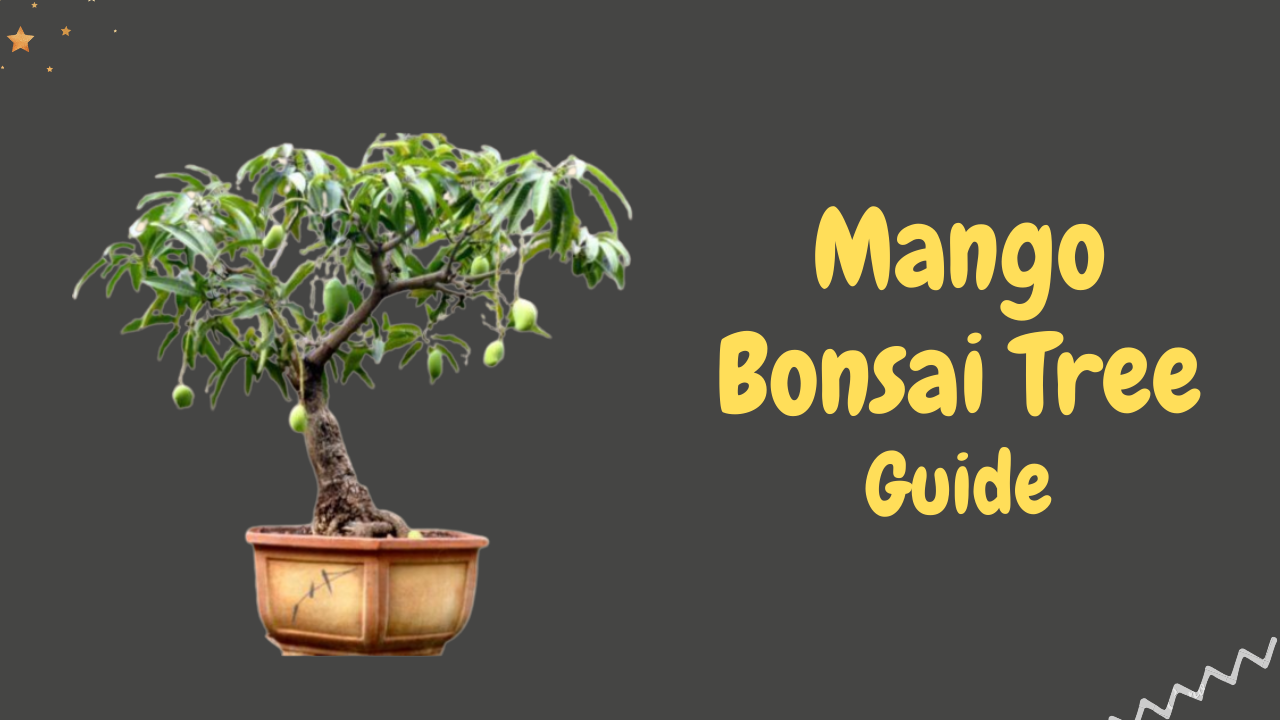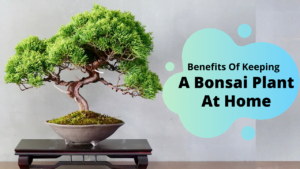Would you like to enjoy your mango fruit directly from the farm? Of course, farm fruits like mango are spacious.
Is there anything you can do?
Bonsai Farming!
It is an ancient Japanese technique to cultivate trees in a small pot. This technique helps you to grow your mango tree in a small container.
So, Let’s plant our king of fruits in a pot.
Mango Bonsai Tree Raising Conditions
| Seed | Hybrid or natural variety |
| Soil | Moist high aluminium content, well-drained soil |
| Seed germination | 1-3 weeks |
| Location | Sunny place (8 hours per day) |
| Temperature | 70–80-degree Fahrenheit |
| Fertilizer | Organic compost |
| Plant height | 10-15 feet |
Affordable bonsai plants online: If you’re on a budget but still want to enjoy the beauty and benefits of bonsai, affordable bonsai plants online are a great option. You can find a variety of different species and sizes available at reasonable prices. Just be sure to choose a reputable seller and read reviews from other customers before making a purchase.
The mango tree grows best in a tropical climate because it likes warm and humid climates. They hardly survive below 30F. A mango tree can grow up to 32 meters tall. However, if you are short of space or residing in a cold climate, where growing a mango is difficult, you can cultivate mango bonsai.
A well-cared and nourished mango tree can live up to 300 years. Also, there are 500+ mango varieties available globally. The best variety to look at is Irwin, Nam Doc Mai, King Thai, Carrie, Coggeshall, Neelam, Glenn, and Amrapali, which can be grown in containers.
Mango bonsai can be grown either through seeds or from a nursery plant. However, most people prefer to grow a mango tree from seed. To grow mango plant from seed. Select a good quality of grown mango. Get a pot with good quality garden soil. Soil should be highly moist. Also, regular pruning is required to minimize its growth.
Breeding a Mango Bonsai Tree
Mango plants can be adapted into bonsai from a seed or a nursery plant, depending on the space available. Many people choose to plant a seedling, but this can take eight years for your mango tree to bear fruit.
From Seedling
The suitable time to grow mango is spring or the end of the summer, or the beginning to end of the rainy season. The damp soil is perfect for germination. And it is always essential to select high-quality, fully ripe mango as the seed inside it will be an ideal trait and grow a better tree.
Step 1: Prepare a pot with enriched gardening soil with hummus for better and fast growth of the tree.
Step 2: Place the washed seed an inch below the soil.
Step 3: Place the pot in a warm and moist place for proper germination.
Step 4: Water it regularly. It may take three to four weeks for the plant to proliferate out of the soil.
Step 5: Allow it to grow for six to seven months. Typically, the plant grows straight, but occasionally it develops branches and leaves on the main trunk line.
Step 6: Start plucking new buds of the plant so that the main trunk develops many branches from the base.
The Pot’s Size and Style
The pot size should be large enough to cater to expanding roots, thus can collect more nutrients and moisture from the soil. Therefore, the pot should be 20 by 20 inches or larger. Also, it should have enough drainage holes because mango thrives with good drainage.
Adding a layer of potting soil and another layer of crushed gravel at the bottom bolster the drainage, ultimately making better fruition.
A styling pot is required to make the mango tree appear alluring and produce better. For example, mango tree roots need sufficient space to grow. Finding a deep-seated pot can allow the tree to grow successfully.
Soil and Seed Type
A highly nutritional soli is the best for the growth of mango trees. The preferable soil for mango comprises 40% compost, 20% pumice, and 40% forest floor mulch. Of course, you can use other high-quality gardening soil. But the above-mentioned composition guarantees your tree to last long-time nutrition.
For a Grafted Plant
It is a too lengthy process to cultivate mango bonsai from seed. A quick and more efficient method is to buy a grafted plant. You can quickly get a grafted plant from the mango cultivator or local nursery. The dwarf variety of mango trees starts to develop fruits after two to three years. And more prolific fruit begins to grow after the fifth year.
Step 1: Fill one-third part of the bonsai pot with half potting soil and half coarse sand.
Step 2: Remove seedlings from the nursery pot and place them in a fresh mix pot. Add soil till the roots are appropriately covered, excluding graft line (Raised circle at the base of the trunk)
Step 3: Now gently add water until it reaches the bottom. Continue to water every three days in the same way for the first month. Later watering can be reduced to once a week for a definite two months.
Step 4: Keep watering regularly for 2-3 years. Later, when fruit starts to develop, stop watering till the fruit development is over.
Step 5: Place them in warm weather. Find a spot where it can get full sunlight for 4-6 hours a day. Placing them in balconies, near windows, or even outdoor during warm weather will be beneficial.
Note:
Growing a mango bonsai tree from a grafted plant is a quick process, but if you want to perform grafting by yourself, it’s even lengthier than seed cultivation, cause here you have to grow a seedling from seeds first then you need to combine another cutting with it. But bonsai is an art and so is grafting, the joy it will provide is unmatchable. So, if you can manage to invest enough time in your mango bonsai tree, you can go for self-grafting, but there are three things you need to ensure,
1. First of all, rootstock, you need to prepare your root stock in a way that it can grow well in your natural environment. So, when starting with a seed, make sure the mango plant’s variety can grow without any hesitation in your climate. Don’t worry the final product has nothing to do with the type of seed you are using.
2. You need to be aware of the season for best results. Generally, mango bonsai tree grafting is done in around February or March or in September or October. The climate during then is most favorable for grafting.
3. The type of mango bonsai tree you want should grafted with the root stock. Take a healthy cutting from the mother plant of the type of mango you want and graft it with the rootstock. The fruits they will produce will belong to the second variety.
Learn grafting in more detail.
Taking Care of Mango Bonsai Tree
Best Fertilizer for Mango Bonsai Tree
A balanced fertilizer is essential for the growth of the tree. The mango trees are extremely sensitive to fertilizer burn. So, avoid using chemical fertilizer. Instead, organic fertilizer like composted manure, blood bone meal, and fish emulsion is best. When the tree is young, you can lightly feed it with a balanced fertilizer.
Use citrus fertilizer in spring when the tree begins to bloom and after the fruit has finished developing.
Also, for mango trees, it is recommended to decrease the amount of nitrogen and nourish the tree with more potassium and phosphorus.
It is advisable to delay using fertilizer until the falling of the fruits. When it stops, add the combination of 1 tsp. Of granular 12-5-9 fertilizer into 1 gallon of warm water. Gradually pour one-fourth of the mixture over the soil.
Water the pot every day for four days until all the fertilizer water has been absorbed by the soil. In the first three years, repeat the procedure and later treat the soil with one-fourth cup of 4-4-8 fertilizer diluted in 1 gallon of water.
Mango Bonsai Soil Requirements
It needs light and well-drained soil that is rich in organic matter. The ideal ph level for soil is 5.5 to 7.5, which is slightly acidic to neutral. Instead of using gardening soil, you can use potting mix.
Also, at the time of planting, add one-third part of compost or aged manure in the soil.
Position
A mango tree needs lots of sunlight. Almost eight to six hours of direct sunlight. Full sun is required for the optimal growth and productivity of the plant. Place your bonsai mango container in the south or west direction.
Bonsai Mango Tree Watering
Mango trees grown on the ground do not require much water, but container-grown tree requires. You need to water your mango tree regularly for the first 2 to 3 years. Once the tree matures and starts bearing fruit, water moderately during the pre-flowering period.
Keep doing this until 40%-50%. of the tree is full of flowers and then water them regularly from flowering stage to fruit formation stage. Until a month before harvesting mangos. During this time, start to water moderately.
Tweaking and Pruning
For heavy and bushier growth of the tree, pruning should be done. The bonsai tree does not require a lot of cropping. Still, it is necessary to eliminate dead, damaged, and entangled branches. Because they can cause a lack of air circulation, they can create obstacles for penetration of sunlight that influence trees’ shape and health. But heavy pruning can decline fruition.
Protection from colder climate:
Not all temperature is suitable for mango bonsai tree, especially if you are growing it in a colder region, you need to be more cautious. Colder regions are normally dry, so in these circumstances, you need to provide as much heat and moisture as possible to your tree. A quick but effective advice is to plant the mango bonsai tree in a dark-colored pot, cause darker colors can absorb heat well, and keep it for a longer period. On the other hand, when I said they need constant moisture that doesn’t mean you can leave them in saturated or soggy condition for hours, the more water you provide the more drainage holes they require.
The mango bonsai tree needs a growing environment, which is completely frost-free. So, if the temperature starts to decrease outside, try bubble wrapping the pot to save the roots from getting frostbite. At night, just to avoid any possible freezing risk it suggested bringing the plant inside. If you happen to have a greenhouse, make it your mango bonsai tree’s second home during winter.
Mango Bonsai Tree Pests
The usual pest found on mango trees are Hoppers, scale, mealybugs, and Spider Mites. You can use organic pesticides to control them. However, if pests are not properly controlled, they can reduce the potency of the tree and can lessen fruiting.
Pest and disease are the main factors that damage mango trees. The fragrance of the flower helps to attract the insects for pollination. But few spoil the leaves and damage the mango tree.
The disease that attacks the mango tree is powdery mildew, anthracnose, scab, mango malformation, and black rot. This disease usually happens because of changes in temperature, soil, sunlight, water, and lack of nutrition. Usually, organic methods are used, such as fertilizing by supplying sufficient nutrients, neem oil, or organic pest spray to prevent plants disease.
Conclusion
The mango tree is native to India; hence they love warm and humid temperatures. You can get several dwarf varieties in mango that can be cultivated in a container. You can also grow mango trees at home; you just need to take proper care such as temperature should not drop below 30F. Avoid overwatering and keep animals away from the young plant. Always cut the damage or disease branches to establish a new one.
With such primary care and effort, you can enjoy farm fruit like mango at your place.
Related Articles
- Bonsai for Beginners in India [Update 2024]
- 15 Best Plants for Front Door Entrance India | Auspicious plants for front door
- 10 Study Table Decoration Ideas That Will Make You Love Learning
- Revive Your Bonsai Tree with These Proven Techniques!
- Top 15 Benefits of Bonsai Plants that will Make your Life Awesome
- Top 10 Indoor Plants for Cafes to Enhance Decor & Comfort







